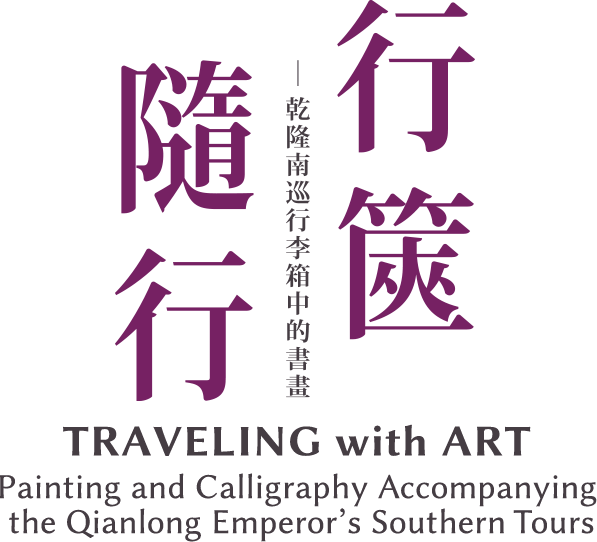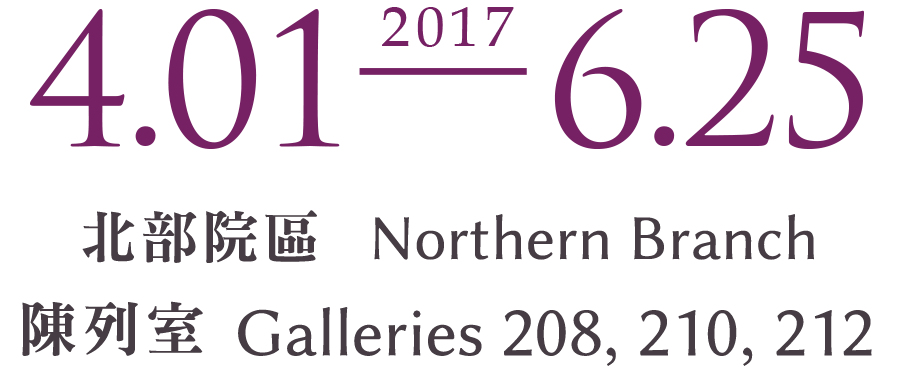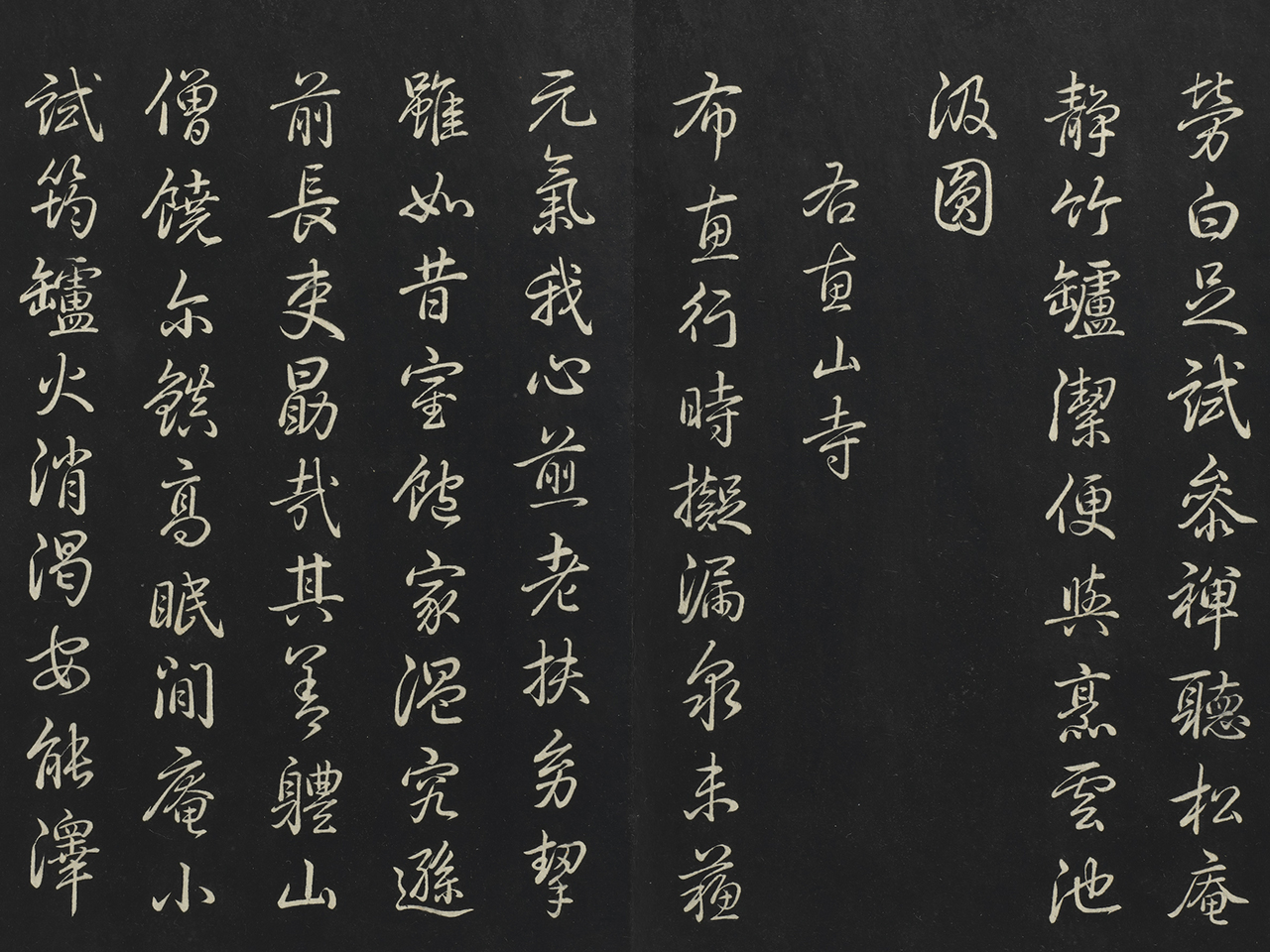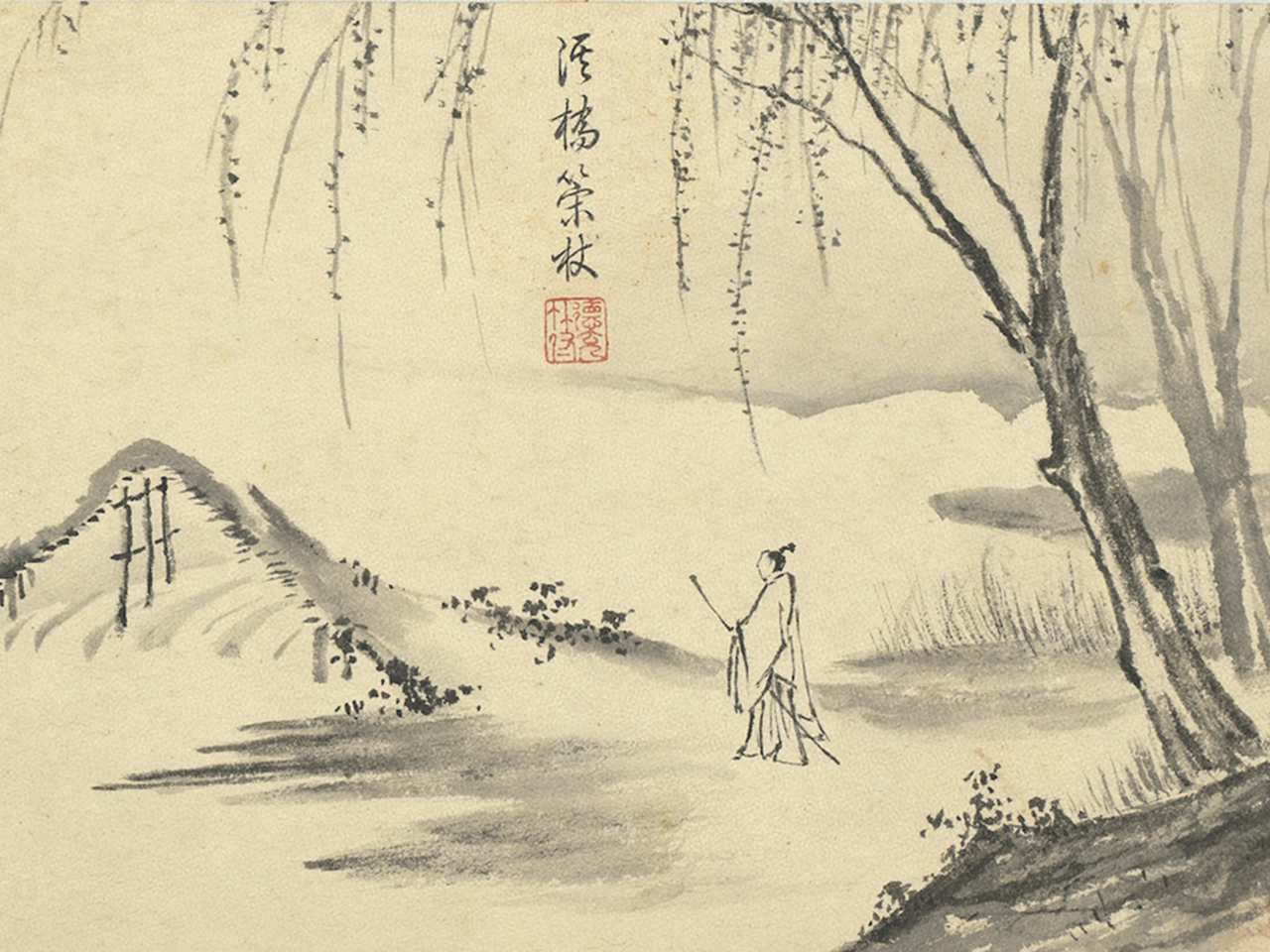The works of painting and calligraphy fortunate enough to travel with the emperor, however, often met with different fates. Some perhaps were never even opened on the trip and placed directly back into storage at the court, while others remained at the temporary palaces and temples where the Qianlong emperor stayed, serving as gifts he bestowed upon local areas. Some were taken back to the court to be repaired, copied, and studied, and then returned intact to their place of origin. Others were indeed appreciated and, upon returning to the court, repeatedly copied, leaving behind versions in different sizes to decorate palaces. Some works of painting and calligraphy also became constant travel companions of the Qianlong emperor, being put into his luggage time and again to go on his imperial tours.
Old Works Rhyming with "Brewing Tea on the Bamboo Stove at Listening Pine Hut"
- Gaozong (1711-1799), Qing dynasty
- Album leaf, ink on paper, 30.1 x 35 cm
The Qing emperor Gaozong, reign name Qianlong, was fond of drinking tea, and every time he took a southern inspection tour, he would visit Huishan Temple in Wuxi, preparing the bamboo stove in its collection to brew tea with water from the Hui Springs. Huishan Temple also had paintings in its collection on the "Bamboo Stove Mountain House" by such Ming dynasty artists as Wang Fu (1362-1416). Among them, one scroll had been lost, so on the first southern tour, the Qianlong emperor ordered Zhang Zongcang (1686-1756) to do a replacement. Zhang died in the year preceding the emperor's second tour, so in Qianlong's poetry in "Second of Old Works Rhyming with 'Brewing Tea on the Bamboo Stove at Listening Pine Hut,'" he wrote "Zongcang who had painted a replacement is now at eternal rest," a reference to this.
Afterwards, in 1779, the painting was destroyed in a fire. Gaozong not only asked that a replacement be made, he also ordered Wang Fu's "Fishing in Reclusion Among Mountains and Streams" from the palace collection be presented to the temple.
Copies of Xia Sen's Landscapes
- Wang Guxiang (1501-1568), Ming dynasty
- Album leaf, ink on paper, 13.3 x 22.6 cm
This is an imitation by Wang Guxiang of an album of paintings by the Southern Song artist Xia Sen (fl. ca. first half of the thirteenth century), the son of Xia Gui (fl. ca. 1180-1230), an important court artist at the time. A consummate artist, very few of Xia Sen's works survive today.
In his inscription dated to the equivalent of 1763, the Qianlong emperor noted then that the original by Xia Sen was no longer surviving, so Wang Guxiang's copy was all the more precious. Qianlong also mentioned that Wang's album was in his luggage and that he took it out repeatedly to make copies at his leisure. As far as Qianlong was concerned, the casual and untrammeled style of Wang's imitation was exactly the type of work that he enjoyed most copying, closely approximating his own personal style. This album may very well be the "Wang Guxiang painting album" mentioned in the luggage of the Qianlong emperor on his third southern inspection tour in 1762.



